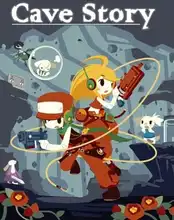The scent of warm plastic from a classic console, the hum of a CRT, the thrill of a game crafted with passion rather than corporate focus – these are the hallmarks of retro gaming nostalgia. But there's another word that resonates just as strongly with this feeling of creativity and freedom: Indie.
For many of us who grew up button-mashing on 8-bit and 16-bit machines, the games we played were, in a sense, the original indie titles. Crafted by small teams, sometimes even just one brilliant mind in a bedroom, these games were born from pure passion and technical ingenuity. Fast forward to today, and the indie scene is thriving, often looking back to those golden eras for inspiration.
So, how do these two worlds, Indie and Retro, intertwine and why do they feel so naturally connected?
From Bedroom Coders to Modern Homebrew
Think back to the early days of computing – the Commodore 64, the ZX Spectrum, the Amiga. Development wasn't the massive, multi-million dollar operation it is today. It was often a few dedicated folks, pouring their hearts into lines of code. Games like Elite or Prince of Persia were revolutionary, built by small, independent teams. That's the original indie spirit!
That spirit didn't die. Today, there's a vibrant homebrew scene dedicated to creating new games for these old machines. We're seeing fantastic new titles released on actual cartridges or disks for systems like the C64, Amiga, and ZX Spectrum. These aren't just ports; they're original creations, developed out of sheer love for the hardware and the challenge it presents. It's the ultimate form of retro indie development, carrying the torch of those early pioneers.
Why Modern Indies Embrace Retro Styles
Walk through any modern digital storefront, and you'll see a flood of indie games sporting pixel art, chiptune soundtracks, and gameplay loops reminiscent of the 80s and 90s. Why is this retro aesthetic so popular with today's independent developers?
Several factors are at play:
- Nostalgia: For developers and players alike, these styles evoke warm memories of childhood and simpler gaming times. It's an immediate connection.
- Efficiency: Creating detailed 3D models and high-fidelity textures is incredibly time-consuming and expensive. Pixel art or low-poly 3D is often more manageable for smaller teams with limited budgets.
- Artistic Choice: Beyond efficiency, retro styles can be a deliberate artistic statement. They offer unique visual constraints and opportunities, allowing developers to focus on strong design, animation, and atmosphere in distinct ways.
- Focus on Gameplay: When graphics are simplified, the core mechanics and game design often take center stage. This mirrors the development philosophy of the retro era, where innovative gameplay was paramount due to technical limitations.
It's a beautiful cycle: the limitations of the past fostered creativity, and that creative output now inspires a new generation of indie developers to build upon those foundations, sometimes even enhancing the retro feel with modern polish.
Finding New Retro Indie Gems
So, where can you find these modern manifestations of the retro indie spirit?
- Homebrew Communities: Websites and forums dedicated to specific retro platforms (like Amiga, C64, ZX Spectrum) are hubs for new homebrew releases. Many developers release demos or full games on platforms like itch.io.
- Digital Storefronts: Platforms like GOG.com are great places to find modern indie games with strong retro influences, often DRM-free. Steam and console stores are also packed with pixel art and retro-styled titles.
- Retro Events: Events like MAGFest often feature "Indie Retro" showcases, specifically highlighting new homebrew games running on original hardware alongside classic fan favorites. It's a chance to see the scene live!
The Enduring Spirit
The connection between indie and retro gaming isn't just about aesthetics or nostalgia; it's about a shared philosophy. It's the belief that passion, creativity, and innovative design can overcome limitations, whether those are the technical constraints of 8-bit hardware or the budget restrictions of a small development team today.
The indie scene keeps the spirit of those original bedroom coders alive, proving that you don't need a massive studio to create something truly special that resonates with players. And for retro gamers, it means a continuous stream of new experiences that feel right at home on their beloved systems or capture the magic of the eras they cherish. It's a partnership built on love for the game.
FAQ
Q: Are all indie games retro-styled? A: No, the term "indie" just means independently developed. Many indie games use modern graphics and styles, but the retro aesthetic is a popular choice for many.
Q: Where can I play homebrew games for old systems? A: Many homebrew games are available as ROMs or disk images that can be played on emulators (like DOSBox for PC classics, or specific emulators for consoles/computers). Some are even sold on physical media for collectors!
Q: Is it easier to make a retro-styled indie game? A: While pixel art or simpler 3D can be faster than high-fidelity graphics, creating good retro-styled art, music, and gameplay that captures the feel of the era while still being fun today is a significant skill and challenge.
Q: Does "Indie Retro" mean old games or new games? A: It often refers to new games developed for old hardware (homebrew) or new games developed with a strong retro aesthetic for modern platforms. Sometimes it also encompasses showcasing classic independent games from the past.

